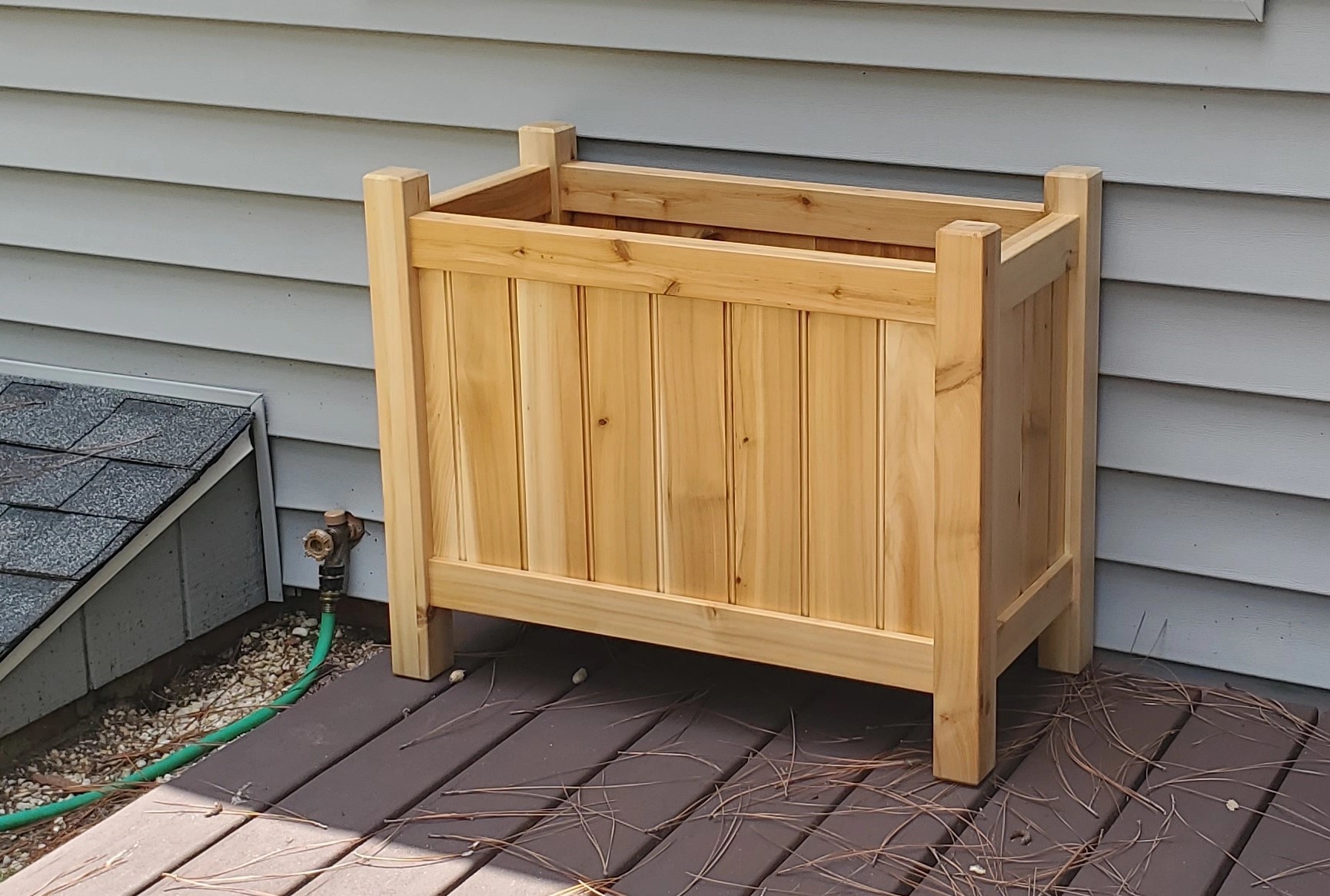A few weeks ago I posted here asking about buying a first hand plane and if it was worth dropping ~$400 on a Lie-Nielsen one.
After all of your comments about getting an old Stanley I kept an eye on Craigslist, Ebay, and FB Marketplace for a little bit and ended up finding someone selling a collection of pre-WWII Stanley planes about an hour north of me. Including, specifically, a 4-1/2 and a 5-1/2 which was exactly what I wanted.
Knowing that the 1/2 sizes were less common than the round numbers and since the guy was local I jumped on it and ended up buying both for $40/each. The linked to album is the before and after of the 5-1/2 after cleaning it up. It’s all tuned up and works beautifully. All in, I’m at $80 for two planes, $15 for cleaning materials, and $35 for a whetstone sharpening kit; way cheaper than a new Lie-Nielsen and I got two planes! Thanks everyone!
This is probably an ignorant question but I’ll ask it anyway. I’m just getting into woodworking. What are good hand planes generally used for and why would someone need multiple versions? I have a cheap one I’ve used for things like shaving doors to not rub.
That’s a perfectly reasonable question.
Bench planes are used for taking rough lumber and squaring and smoothing it for use. If you only buy wood from the hardware store you’re used to seeing “S4S” or “surfaced four sides” boards, so it’s already been squared and smoothed by machines. If you buy your wood from a specialty wood dealer, it usually comes rough. In both cases it’s usually not really square and straight, so you’ll need some means to remove warp, twist, cupping, etc.
Hand planes are the old-school tool for the job. Longer planes flatten longer boards, and shorter planes are used to smooth and clean up after the rough work from the earlier planes. I’m in danger of just recapitulating this article by Chris Schwarz, so I might as well link the whole thing:
https://www.popularwoodworking.com/wp-content/uploads/CoarseMediumFine.pdf
This is an excellent explanation of which planes you need, what they’re used for, and how to set them up for that use.As you already know from your door work, a plane slices shavings of wood whereas sandpaper basically just chews away making dust.
The result is that the plane produces extremely smooth surfaces. Smoother than any sandpaper you’re likely to use. Did I mention the dust?
If you have a fair bit of material to remove, but not so much that a saw is useful, a decent plane with a sharp blade on a well supported workpiece will often do the job faster than a sander. Yes you can start with a coarse grit and get ever finer until you have both the right dimensions and a smooth enough surface, but the plane is smooth all the way and the amount removed in one pass is based on how thick a shaving you take. That makes it easier to “sneak up” on your dimensions. A reasonable compromise is to start with coarse sandpaper and finish with a plane, but did I mention the dust?
A plane takes a bit of time to get tuned up, but once done, it rarely requires more than sharpening. Once you get the hang of sharpening, it doesn’t take much longer than swapping out sandpaper (except for the those Velcro-like sanding disks), but a plane doesn’t produce dust.
As you can tell, I hate dust. Unless you spend a fortune on dust collection, dust will always get everywhere, making a general mess, spoiling finishes, and clogging lungs. I’ve never heard of a dust collection system that eliminates the need to wear good PPE.
As a bonus, setting up the plane the right way with a sharp blade lets you take nice curls of wood, even from scrap, that can be turned into wood “roses” and such for decorations, gifts, or the craft market. The regular shavings can be bagged up and used (and even sold!) for kindling, small animal cages, or mulch. Be careful with your wood species, though, as some are toxic. All the more reason to avoid creating dust! :) As far as I can tell, wood dust is basically just a potentially harmful substance, even from non-toxic specifies, with few if any practical uses.
About the only place I like to use sandpaper is to do a quick pass by hand with a medium or coarse grit to roughen a surface for gluing or to get a mechanical bond with additional coats of epoxy when I let the previous coat cure too long.
A shop vac, some dryer tubing, and some of your wood working skills will build you a custom dust collector system for not much money. If you really hate dust that much.
Yes, I’ve looked at them and seen some very good ones in action. I’ve yet to see one that will pass OHSA rules without PPE. My bandsaw set-up gets close enough that I wear a mask only during a cutting session and few minutes after. Mitre saw and circular saw go to my outdoor workstation and I still wear a mask.
OHSA compliant dust collection is possible, but not in my budget.
I’ll admit that’s a much higher standard than what I had in mind lol
Ha! Fair enough. I really don’t have a good idea what the real risk is for a reasonably cautious hobbyist. For me, it was trying to address the dust hazard that made me realize just what a pain dust has been for me. The shop is so much easier to keep clean. My bright finishes come out so much better. It’s just all over nicer.
(Wall of text warning!)
When I decided to turn occasionally working with wood, mostly outside, into more of a regular activity in my retirement that would be mostly inside I did a bit of research and concluded that dust was the probably the biggest unaddressed hazard in most hobby shops. We all know to not stick our fingers into the blades and to not breathe the fumes from most finishes, but dust is generally treated as an annoyance rather than a hazard.
So, when I was building my shop, I put dust control at the top of my list. It quickly became clear that I couldn’t afford to handle dust the way I wanted and still have tools and equipment and lumber, so I figured out how to work around the problem. That’s when I decided to go with a shopvac with a HEPA filter and a cyclonic add-on and to build an outdoor workstation for the worst of the power equipment.
Those cyclonic add-ons to a shopvac are an amazing convenience. If you have a HEPA filter, opening up the intake to the shop air after finishing with the tool and directing the vac output out to the room for good circulation will clear virtually all remaining hanging dust in just a few minutes. If you have the space and a bit of spare cash, a box fan running in an enclosure of good furnace filters mostly takes care of hanging dust as you’re working. Those techniques might not meet OHSA, but it’ll be darn close, especially given you’re probably not producing dust 40 hours a week, 50 weeks a year. Slap on a decent mask for a few minutes and that will get you to OHSA, so that’s what I do.
As I said up top, I don’t actually know that dust collection needs to get OHSA levels to manage the risk associated with a hobby shop, but it’s the route I took. Not knowing means I also don’t criticize the choices others make. I’m just happy to see that most people are creating much safer environments by doing something more than opening a window, even if they’re doing it for reasons of convenience, not safety.
When I first started woodworking, I was in an uninsulated shed in Alaska and didn’t bother with anything more than a crappy dust mask. After my first project, I was coughing dust and blowing sawdust out of my nose for a few days. Fuuuuuuuck that.
Since then, I’ve moved a few times, upgraded my dust collection setup, and I still just wear a respirator with P100 cartridges (unless I’m finishing, in which case I’ll use the VOC cartridges).
Even with proper dust collection, I’d rather just wear PPE. At this point, I view having good dust collection as more of a time saver for cleaning than actual protection.
Even with proper dust collection, I’d rather just wear PPE. At this point, I view having good dust collection as more of a time saver for cleaning than actual protection.
That’s pretty close to my own view. I’ve moved the tough to manage stuff outside and leave the easy to manage stuff inside. I still wear PPE in both cases, because that is the simplest, cheapest, and, most importantly, reliably does the job.
Some of my equipment pretty much has to be outside anyway, because my shop is just too small for both boat building and a bunch of dust makers.
I’m also doing more of my work with just hand tools. I find it pleasurable and being just a hobby, it’s not like there are any time pressures. And now I’m retired, so I’ve got even more time.
That’s awesome, congrats on the find! They’re beauties.
I just watched the Paul Sellars video about restoring planes, highly recommend his no nonsense approach!
Ok, I got an imgur warning for erotic or adult imagery. I’m assuming that was intentional, OP, because it was a dangerously good deal? The planes look great!
Ha, that’s odd, I don’t have them marked as NSFW. Imgur has been weird with that stuff since they decided to ban nude content a few months ago.
Gotcha; well I laughed anyway :)



